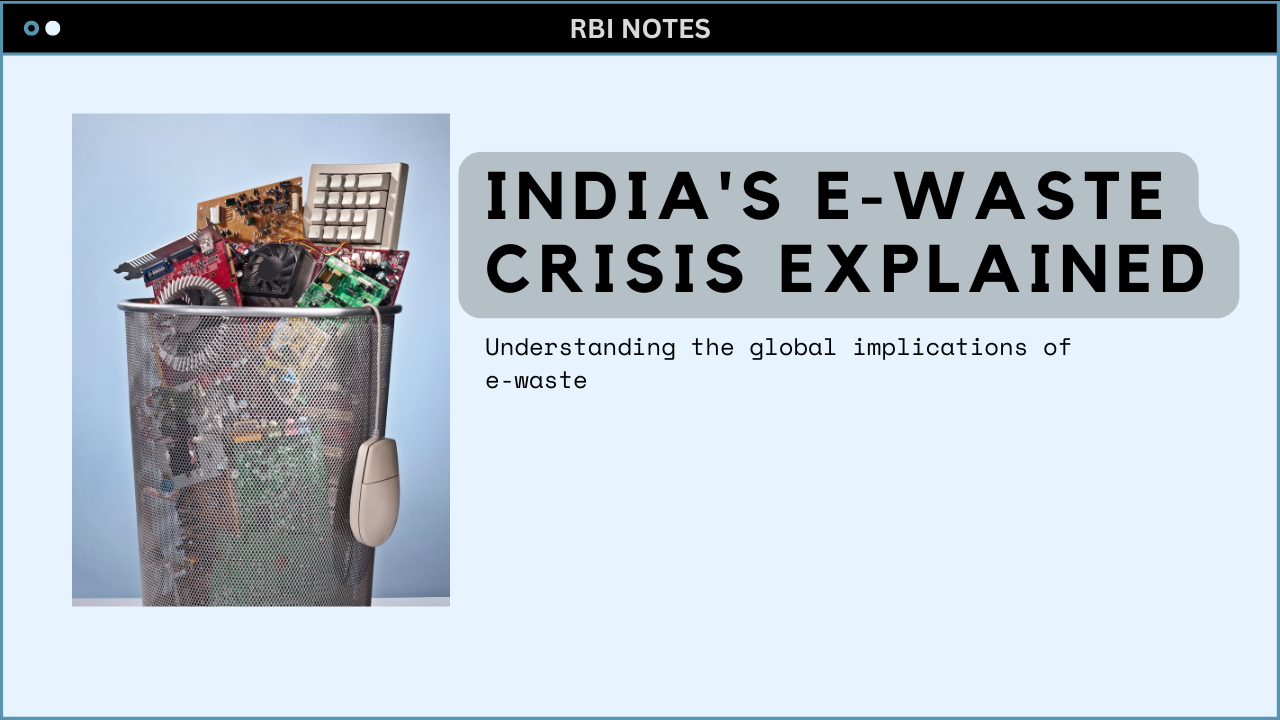India has witnessed a staggering 163 percent growth in generating electronic waste from screens, computers, and small IT and telecommunication equipment (SCSIT) between 2010 and 2022, according to the United Nations Trade and Development (UNCTAD) report titled ‘2024 Digital Economy Report: Shaping an Environmentally Sustainable and Inclusive Digital Future.’ The report highlights the growing challenge of electronic waste in the digital age and its impact on both the environment and human health.
India’s Rising Share in Electronic Waste
The report notes that India has doubled its share of global SCSIT waste generation, increasing from 3.1 percent in 2010 to 6.4 percent in 2022. Developing countries in Asia, particularly China, contributed the most to electronic waste in 2022, with China alone accounting for nearly half of the global total.
Hazardous Effects of Electronic Waste
The report underscores the detrimental effects of electronic waste, particularly in developing countries where much of this waste is managed informally. The waste contains hazardous materials such as heavy metals, arsenic, cadmium, lead, mercury, and persistent organic pollutants. If not properly handled and treated, these substances can have severe impacts on both the environment and human health.
India’s Efforts Towards Sustainable Waste Management
Despite the challenges, the report acknowledges India’s efforts in minimizing the impact of product packaging and waste. It commends initiatives such as Amazon India’s move to eliminate single-use plastic by replacing plastic packaging materials with sustainable alternatives like paper cushions. Additionally, Zypp Electric, a last-mile delivery company in India, has made strides in sustainable transportation by utilizing a fleet of zero-emissions electric scooters and investing in urban charging networks.
Digitalization and Data Growth in Asia
The report also sheds light on the rapid digitalization in Asia. In 2023, nearly one-third of global mobile data traffic originated from Northeast Asia, followed closely by the group comprising Bhutan, India, and Nepal. By the end of 2029, global 5G subscriptions are projected to exceed 5 billion, accounting for nearly 60 percent of all mobile subscriptions. This growth will be driven primarily by Northeast Asia, with India playing a significant role.
Data Centre Expansion in Asia
With the surging demand for cloud-based services, the data center market in Asia and the Pacific is expected to reach around $28 billion by 2024. China is leading the way in data center development, with India and Singapore among the key players in this rapidly expanding market.
India’s remarkable growth in electronic waste generation highlights the urgent need for sustainable solutions in waste management and digital infrastructure. While the challenges are significant, India’s proactive measures towards sustainability and its role in the broader digital economy position it as a key player in shaping a more environmentally sustainable and inclusive future.


